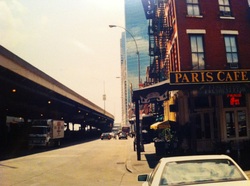 A must watch! For anyone who has ever been to or lived in New York City, this video will really hit home. Even if you haven’t, Sanderson’s visuals of Manhattan’s once natural ecologies are awe-inspiring—and he gives a surprisingly positive vision of what New York (or any urban area) could look like in the future. He even talks about how the multiple connections in the ecosystem are responsible for its resilience. My Commentary: It is so intriguing to imagine what the physical history might have been in a place you know so well in its current state. We often take for granted the complexities of life that existed before colonial settlements moved in--before we began to build so many human-oriented structures. Many times we just assume that, yes, there were trees, maybe some meadows, ponds--not much happening. This video reminded me otherwise. I am highly impressed with Sanderson’s interpretation in that he pays respect to the complex web of life that must have existed in order to support the 51 unique habitats on that land over 400 years ago. What is missing from his commentary, however, is the fact that Manhattan, like most urban areas, is highly dependent on input from the outside world. In fact, in its current state, it is nearly completely dependent on exterior sources for its food, building materials, and other life essentials for the survivability and daily living requirements of its inhabitants. That said, enjoy the talk and think about the tremendous impact we humans have on our living systems and how we might better adapt our living arrangements to harmonize with our natural environments. Enjoy the talk!
0 Comments
Your comment will be posted after it is approved.
Leave a Reply. |
Author:Ted Bahr is the founder of Prairie Sage Permaculture. MORE Archives
April 2023
Categories
All
|

 RSS Feed
RSS Feed
